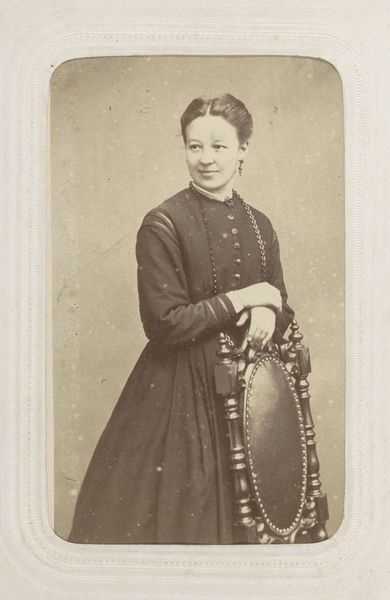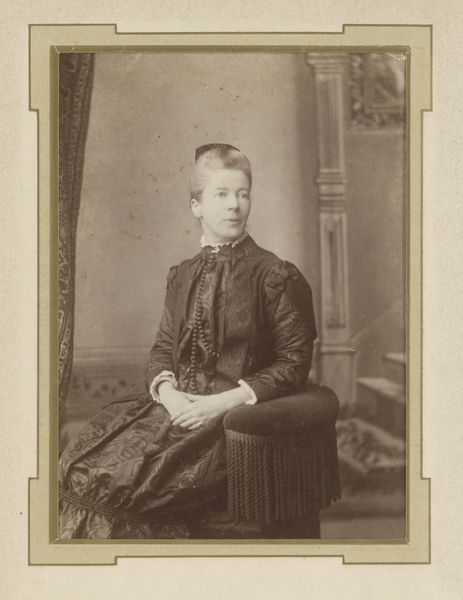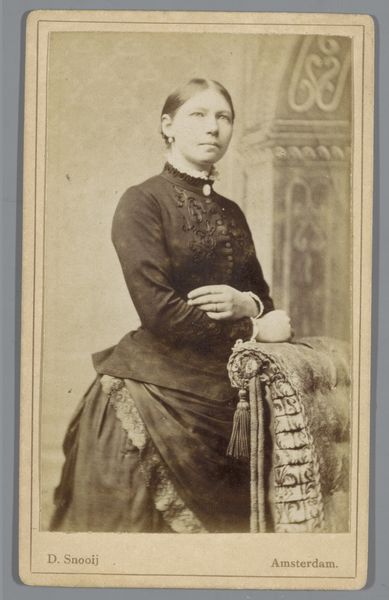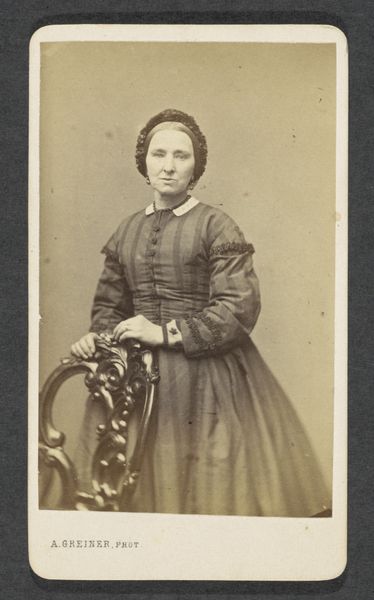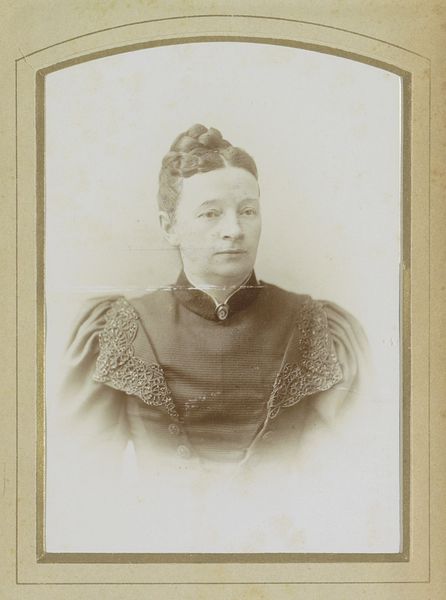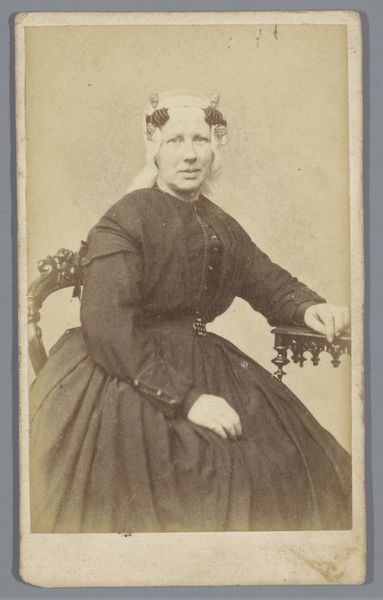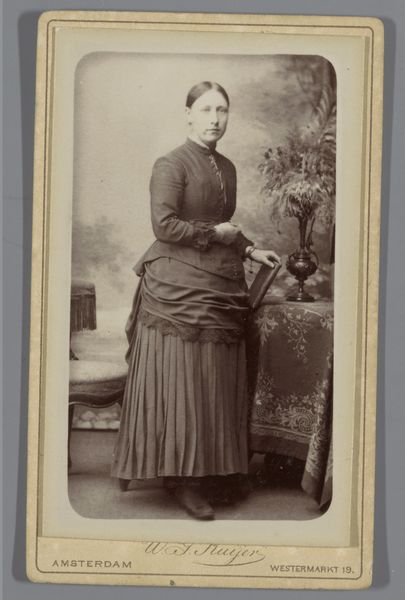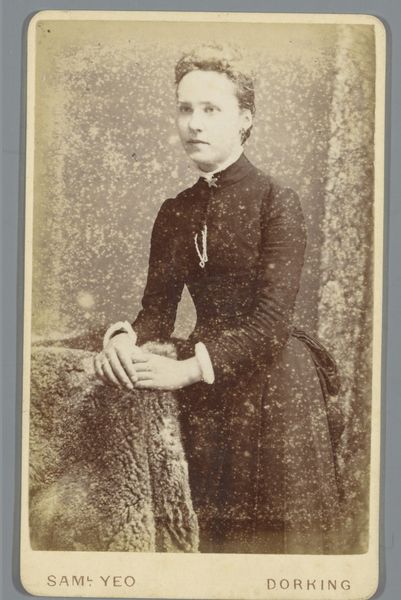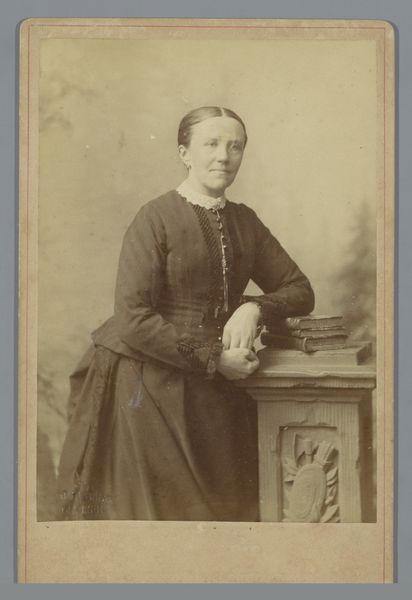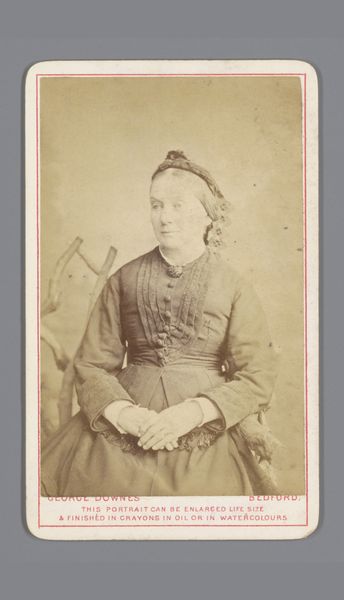
Portret van een vrouw in een lange jurk, staand tegen een stoelleuning 1854 - 1865
0:00
0:00
photography
#
portrait
#
photography
#
historical photography
#
portrait reference
#
19th century
#
genre-painting
#
dress
Dimensions: height 90 mm, width 58 mm
Copyright: Rijks Museum: Open Domain
Curator: The image before us, dating from 1854 to 1865, presents a formal "Portret van een vrouw in een lange jurk, staand tegen een stoelleuning," created by P. Weijnen & Fils. The sitter's reserved gaze immediately captures the viewer’s attention. Editor: It strikes me as an exercise in brown, or perhaps more accurately, many shades of brown. What material processes yielded such monochrome stillness in this portrait? Curator: Well, we are seeing photography, likely an albumen print which were all the rage, a cutting-edge medium in that era. These images served much the same function as painted portraits, preserving likeness but making it more accessible, cheaper, though certainly not instantaneous. Editor: It’s interesting how quickly photography was embraced. It mirrors how industrial reproduction affected craft economies at the time. What was a highly specialized painted portrait could become, not exactly mass-produced, but more widely attainable. I imagine the role of the portraitist altered substantially? Curator: Precisely, a transformation mirrored by changes in clothing manufacture. The woman’s dark, buttoned dress, simple jewelry - these denote respectability, perhaps new economic realities reflected in less ornate displays of wealth, and mass manufactured items and materials. But such a stark composition must hold further meaning for contemporary viewers as well. Editor: What do you mean by stark? The plainness in dress is interesting; yet there's obvious attention to detail, right down to the needlepoint design on the chair. One hand carefully holds down her skirt in front. But these material details, or absence of more elaborate detailing, underscore how photography was able to change production cycles and patterns of dressmaking. Curator: Perhaps, yes. It makes me also wonder about the symbols related to her attire and status; her gaze suggests she has a strength tempered with perhaps anxiety about societal place as well, doesn't it? Or, might we interpret the way she clutches the chair's back as emblematic of broader anxieties of this time as photographic media took hold? Editor: These processes affected class. Early photography needed time and specialized knowledge; thus even it offered limited access despite altering economies that impacted what people were able to display and manufacture. Curator: Yes. A sober reminder indeed.
Comments
No comments
Be the first to comment and join the conversation on the ultimate creative platform.
